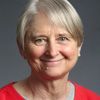Why did the Seattle Public Library pick “The Painter” by Peter Heller for the “Seattle Reads” program? Literary fiction claimed four spots on the top-10 list of most-checked-out books.
Lit Life
The Seattle Public Library has chosen its “Seattle Reads” pick for this year — the literary novel “The Painter” by Peter Heller. It’s about a famous painter trying to distance himself from an act of violence in his past. Of course, this being a novel, he’s not let off so easily. Heller will be in town May 14-17 — more on that closer to the date.
I asked Chris Higashi, director of the Washington Center for the Book, which helps pick the “Seattle Reads” book, why “The Painter”?
Higashi said Heller’s book is rich with themes for discussion: good and evil, right and wrong, murder and revenge, justice, redemption, love, art, inspiration, poetry. All good, but I was intrigued with the next part of her answer — that literary fiction is well-represented on the list of the most-checked-out books in the Seattle Public Library.
Top 10 e-books checked out at Seattle Public Library for 2014
1. “Gone Girl” by Gillian Flynn
2. “The Fault in Our Stars” by John Green
3. “The Goldfinch” by Donna Tartt
4. “Divergent” by Veronica Roth
5. “Fifty Shades of Grey” by E.L. James
6. “The Cuckoo’s Calling” by Robert Galbraith (J.K. Rowling)
7. “A Game of Thrones: A Song of Ice and Fire” by George R.R. Martin
8. “The Night Circus” by Erin Morgenstern
9. “The Book Thief” by Markus Zusak
10. “Allegiant” by Veronica Roth
So I asked library spokeswoman Andra Addison for a list of the books that were checked out the most at SPL in 2014. Higashi is right; it’s a pretty darn literary list. Four of the top 10 are literary fiction, according to SPL librarians. Seven of the second 10 (11-20) are literary fiction.
Most Read Entertainment Stories
Maybe you’re asking yourself: What is literary fiction, as opposed to other fiction?
That is a loaded question, as so many writers of, say, mysteries or science fiction, are splendid literary writers. Richard Price and Kate Atkinson come to mind, or Margaret Atwood, who frequently writes science fiction.
Perhaps this excerpt from Writer’s Digest helps: “Literary fiction is usually more concerned with style and characterization than commercial fiction. Literary fiction is also usually paced more slowly than commercial fiction. Literary fiction usually centers around a timeless, complex theme, and rarely has a pat (or happy) ending.” Commercial fiction, by contrast, “is faster paced, with a stronger plot line (more events, higher stakes, more dangerous situations). Characterization is generally not as central to the story. The theme is very obvious, and the language not as complex.”
But you want to see the list.
Here are the four literary novels in the top 10 (figures are for print editions; for e-books, see the information box):
1. “The Goldfinch” by Donna Tartt. The story of a young man trying to reconcile with his past, “The Goldfinch” won the Pulitzer Prize for fiction.
2. “The Signature of All Things” by Elizabeth Gilbert. I was happy to see that Gilbert’s novel about a 19th-century heiress with a miserable love life who travels the world to study moss (I learned the word “bryologist” reading this wonderful book) was in the No. 2 spot, since I have been relentlessly recommending it to anyone who will listen.
3. “The Invention of Wings” by Sue Monk Kidd. The relationship between a young white girl in antebellum Charleston, S.C., and her female slave/servant of the same age.
9. “The Luminaries,” by Eleanor Catton, the Man Booker Prize-winning novel set in 19th-century New Zealand.
The rest of the top 10:
4. “Allegiant” by Veronica Roth. Young-adult science fiction set in a futuristic and dystopian Chicago, part of a trilogy that also includes “Divergent” and “Insurgent.” (a movie version of “Divergent” was released in 2014).
5. “The Fault in Our Stars,” by John Green, a popular young-adult novel that became even more popular after the movie version was released.
6. “Gone Girl,” the intricately plotted thriller by Gillian Flynn.
7. “The Boys in the Boat” by Daniel James Brown, the stirring true story of the University of Washington rowing team that competed in the 1936 Olympics.
8. “Capital in the 21st Century.” French economist Thomas Piketty’s learned treatise on capitalism and how it is contributing to rising inequality worldwide. Though its detractors might argue, “Capital” is nonfiction.
10.“Divergent” (see “Allegiant.”)
The second 10 are even more “literary.” Seven are classified by SPL librarians as literary novels, including “Life After Life” by Kate Atkinson, “Hild” by Seattle author Nicola Griffith,“The Valley of Amazement” by Amy Tan, “The Lowland” by Jhumpa Lahiri,“Americanah” by Chimamanda Ngozi Adichie and “The Interestings” by Meg Wolitzer. Rounding out the second 10 — the comic novel “Where’d You Go, Bernadette” by Maria Semple,“Quiet,” nonfiction about introverts by Susan Cain and “The Silkworm,” the detective novel by J.K. Rowling, writing as Robert Galbraith.
By now you may thinking, well, that’s nice, but compared to what?
Compared to the rest of the country. Here are the 10 best-selling books in America in 2014, according to Publishers’ Weekly. Not a literary novel among them:
1.“The Fault in Our Stars” (trade paper edition)
2.“The Long Haul” by Jeff Kinney (Kids’ book, part of the “Diary of a Wimpy Kid” series)
3.“Divergent”
4.“Insurgent”
5.“Killing Patton” by Bill O’Reilly and his writing partner, Martin Dugard. Popular history by the Fox News host.
6.“Allegiant” (companion to “Divergent” and “Insurgent”).
7.“Gone Girl.”
8.“The Fault in Our Stars” (movie tie-in cover)
9.“The Fault in Our Stars” (hardcover)
10.“Frozen” (tie-in to the Disney movie)
What makes Seattle such a literary-fiction kind of town? I could offer all kinds of reasons, from our wonderful independent bookstores to our relative level of education/affluence to the cloudy weather. What do you think? What is your favorite literary novel? Leave a comment, or send me your suggestions at mgwinn@seattletimes.com.
